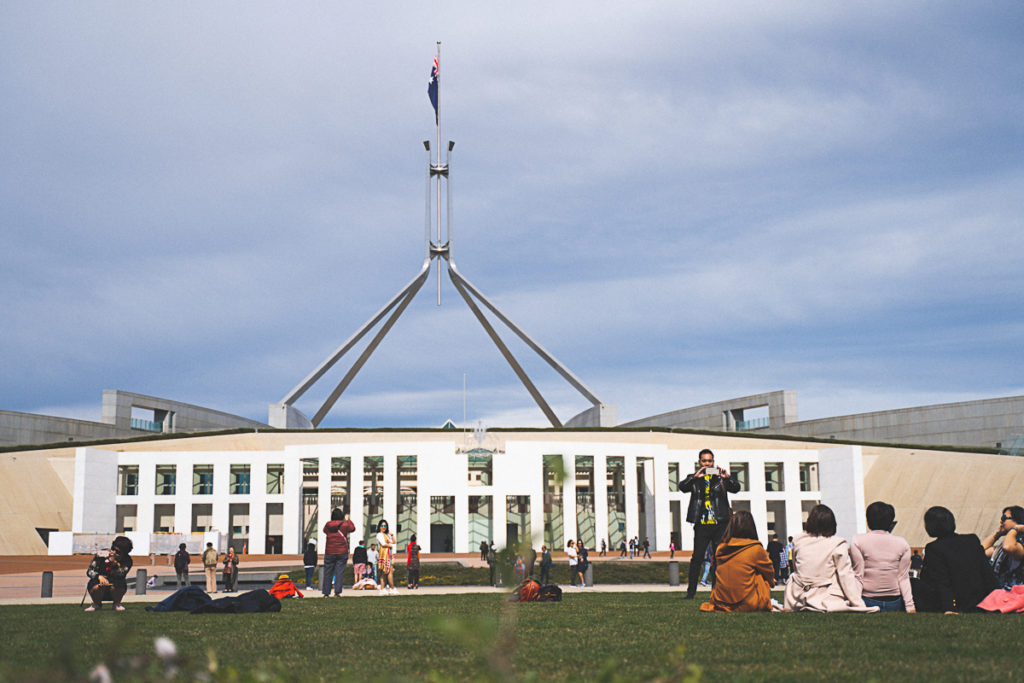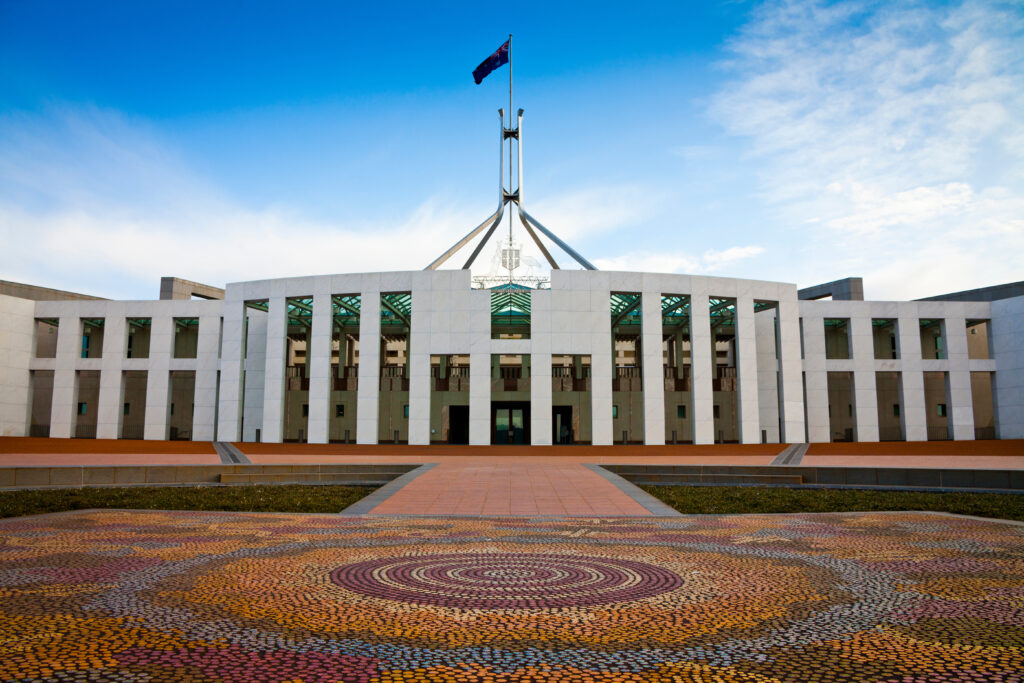With the 2020 US presidential election on every TV, newspaper, and social media feed, you might be wondering how the American political system differs from the Australian one. We’re here to guide you through the similarities and differences between these two political systems.
The Australian political system
Type of government
The politics of Australia take place within the framework of a federal (meaning power is divided between the federal government and states and territories) parliamentary constitutional monarchy (a blended form of government in which a king or queen – in Australia’s case, Queen Elizabeth II – with limited political power rules in combination with a legislative governing body, Parliament, which represents the Australian people). The leader of the government is the prime minister.
Australian citizens elect all members of federal parliament. There are two houses of parliament: the House of Representatives and the Senate. The House of Representatives is also called the ‘people’s house’. Each member of the House of Representatives represents the people that live in their electorate. Australia is divided into 151 electorates based on population. Voters in each electorate choose one member to represent them and their interests in the House of Representatives. The Senate is also called the ‘states house’. Voters from each state and territory elect senators to represent them in the Senate. All states are equally represented in the Senate regardless of their size or population. Each state elects 12 senators, and territories (ACT and NT) elect two senators each.
The House of Representatives is where most legislation – called bills – originates before becoming law. Bills have to go through both houses of Parliament before they become law.
Once a bill is approved by the House, it then moves to the Senate for further debate and discussion. If the bill reaches a majority in the Senate, they’ll approve it and it becomes law.
Australia has maintained a stable liberal democratic political system under its Constitution, one of the world’s oldest, since Australia’s Federation in 1901. Australia is the world’s sixth oldest continuous democracy and largely operates as a two-party system: the Australian Labour Party (a typically more democratic socialist party) and the Liberal Party of Australia (a typically more conservative party).
Voting
Australian citizens over the age of 18 are required to vote in federal elections, and not voting can lead to a fine (the amount varies). Voters can appeal the fine and explain why they didn’t participate. Elections are also always held on a Saturday in Australia, and citizens can vote via postal ballot or through overseas embassies.
How elections are won
A federal election must be held at least once every three years. The Australian Constitution sets the maximum term of the House of Representatives at three years, but the prime minister can request an election earlier (this is called a ‘snap’ election). At federal elections, voters choose members of parliament from different parties to represent their views and interests in the Senate and the House of Representatives, with two different ballot papers.
At a federal election, the party with the majority of members elected to the House of Representatives becomes the Australian government. The leader of the winning party becomes the prime minister.
The American political system
Type of government
Unlike Australia, the United States is a republic. This means that the president is considered to be both the Head of State and the leader of the government. The American system itself is split into three branches of government: the executive, the legislative, and the judiciary branches.
The executive body is the president and their cabinet, and it is the job of the executive to enforce and enact laws. The legislative body writes and makes laws; in the US this is formed by the Senate and the House of Representatives. The judicial body in the US is the courts, with the highest court in the US being the Supreme Court. The Supreme Court is made up of nine judges (or justices), each of which have lifetime tenure. When a Supreme Court justice dies or retires, the president nominates and the Senate confirms a new justice.
In the US, the president must only serve a maximum of two four-year terms and possesses the power to sign ‘executive orders’ that don’t require approval from Congress (America’s version of parliament). In addition to executive orders, the president may also veto or sign legislation, convene or adjourn Congress, command the armed forces, and grant pardons.
Voting
In the US, voting is voluntary among citizens. If a citizen isn’t particularly interested in any candidates, they don’t have to vote. This isn’t the case in Australia, where voting is compulsory and not voting can lead to fines.
How elections are won
In Australia, elections are won by the candidate who has the most MPs in parliament. However, this isn’t the case in the United States. During a federal election, the American people can cast a vote for the president (executive) and the legislative (House and Senate). Each body is a separate vote, so it’s possible that a party could lose the presidential election but still win the Senate or the House. As a result, a party doesn’t need to win the presidency to influence law in the United States.
The presidency is decided by the electoral college, rather than the American people directly. For instance, if someone votes for a Democrat in the state of California, they’re actually voting for their candidate to receive electoral college votes. The electoral college votes aren’t split evenly; whoever wins the vote in a state wins all the electoral college votes. Each state has a different number of electoral college votes; for example, California has 55 and Hawaii has four.
Similarities between the Australian and American political systems
- Both are federal systems, with federal and state governments.
- Both have a parliament (called Congress in the US) composed of two houses: a House of Representatives and a Senate.
- Both have a House that is popularly elected with electorate size determined by voting population.
- Both have a Senate that represents the states and territories: two senators per state in the US, 12 per state and two per territory in Australia.
- All legislation must be passed by both houses of parliament.
- Both have written constitutions that describe the powers of the federal government.
- Both have an independent judiciary (Supreme Court in America, High Court in Australia).
Differences between the Australian and American political systems
- The United States is a republic, whereas Australia is a constitutional monarchy. This means that the US president is both head of state and head of government and is directly elected by the people. Australia’s head of state is currently Queen Elizabeth II, who is represented by a governor-general chosen by the prime minister.
- The Australian prime minister is chosen by the elected members of the party/parties that have won a majority of seats in the House of Representatives. In comparison, the US president is directly elected by the people.
- Half of the members of the Australian Senate face election every three years, whereas one-third of the US Senate is elected every two years.
- Elections in the US are on set days for fixed terms, whereas an Australian prime minister may dissolve parliament and call an early (‘snap’) election.
- Electoral enrolment and voting is compulsory in Australia but voluntary in the US.





